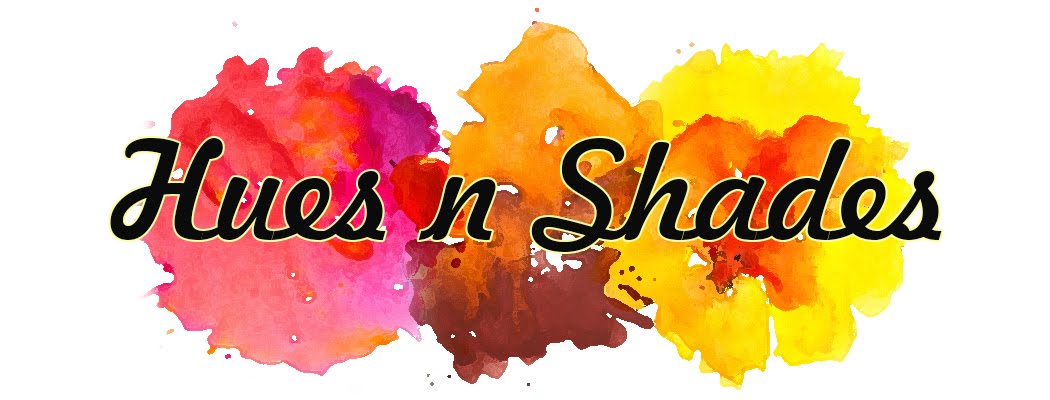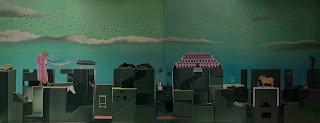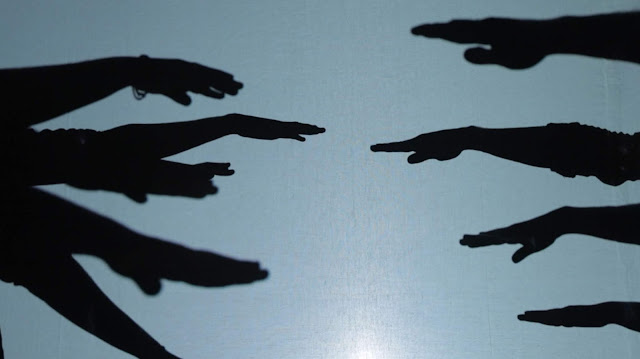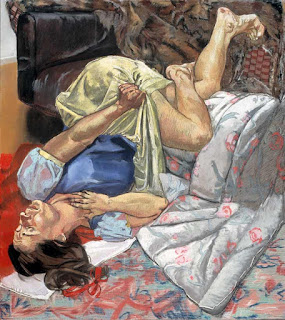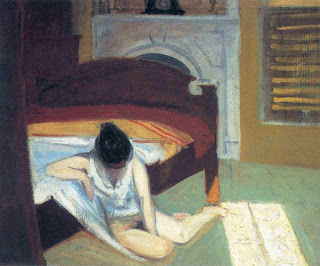This is the second part of the interview that was published last week. Click HERE to read the First part.
Deepa: You completed your MFA in Santiniketan. The system there is entirely different from the regular fine arts colleges anywhere in India (though the scenario is changing now). How different is it do you think? What is your thought on the current educational scenario particularly with respect to Fine Arts? How engaging and enriching is the teaching-learning process today? Are the students well-equipped to start a career in their chosen path by the time they step out of the colleges?
M.Cheeroth: I am engaged in painting right now. Performances are also on the way. I was part of the discussions at the Mathrubhumi Literature Festival that was held recently in Thiruvananthapuram. It was about the political challenges of our times.
I have been invited to B V Doshi’s Vastu Shilpa Foundation who will be conducting an International Studio with students from the University of Michigan and from India. The Studio is entitled "At the Cusp of Land and Water". It’s from 26 to 28 Feb and from 4 to 6 March 2019.
Deepa: I am reminded of the performances of Marina Abramovic. The ones I have seen most is perhaps hers. Whether it’s with Ulay in “Rest Energy” or “Rhythm 0” and all her other performances she places herself in situations of extreme endurance, the acceptance of physical violation as if she wants to test how much self-affliction can be endured; the limit of it.
M.Cheeroth: Performance art has various traditions in it. The works of Abramovic and Patty Chang are mostly issues related to gender, spiritualism and matters connected to that. I would like to recount one of the recent accounts of a Russian activist-performance artist, Petr Pavlensky. People usually notice a protest when it’s done collectively as a mass. Here, it just shows how an individual can make a powerful impact with Pavlensky’s nude performance in front of the Russian Secretariat by nailing his testicles to the Red Square. It is a challenge to the police and the officials and the law and justice. The life of the artist is perilously at stake. People like Pavlensky cannot be moved, a mass can be made to flee by firing or something but to move someone like Pavlensky the nail has to be pulled out. This single performance made the world aware of those critical issues and triggered the discussion internationally. At another instance, he also performed by wrapping himself with barbed wires and the police couldn’t do a thing to remove him which obviously wasn’t an easy task. They had to bring cutting tools to release him out. He is single-handedly and powerfully challenging the State and the System. From mass-level to individual-level, the protest turned out to be a potent one in recent times. The performance is called “Man and Might”. There are many cases registered in Pavlensky’s name in many countries. I would say he is one of the great role models and inspiration. Such prevailing impact can be brought about only through performance and is not possible through some other medium like painting.
M.Cheeroth: Performance art has various traditions in it. The works of Abramovic and Patty Chang are mostly issues related to gender, spiritualism and matters connected to that. I would like to recount one of the recent accounts of a Russian activist-performance artist, Petr Pavlensky. People usually notice a protest when it’s done collectively as a mass. Here, it just shows how an individual can make a powerful impact with Pavlensky’s nude performance in front of the Russian Secretariat by nailing his testicles to the Red Square. It is a challenge to the police and the officials and the law and justice. The life of the artist is perilously at stake. People like Pavlensky cannot be moved, a mass can be made to flee by firing or something but to move someone like Pavlensky the nail has to be pulled out. This single performance made the world aware of those critical issues and triggered the discussion internationally. At another instance, he also performed by wrapping himself with barbed wires and the police couldn’t do a thing to remove him which obviously wasn’t an easy task. They had to bring cutting tools to release him out. He is single-handedly and powerfully challenging the State and the System. From mass-level to individual-level, the protest turned out to be a potent one in recent times. The performance is called “Man and Might”. There are many cases registered in Pavlensky’s name in many countries. I would say he is one of the great role models and inspiration. Such prevailing impact can be brought about only through performance and is not possible through some other medium like painting.
Deepa: Physicality, being in the moment, temporal and immediate are some of the key factors to the soul of this form. How do you think that this art would withstand the test of time? Do you believe in leaving such footprints? (Of course, there’s videography yet...there’s a kind of ephemeral aspect to it.).
M.Cheeroth: I don’t believe in documenting and archiving my work, but, it happens, as part of the current technological era we are living in.
From Colombo Art Biennale 2016
Deepa: Depending on what you explained earlier about body and space, all the components that you mentioned were realized in “Memoir/Collecting the Artists”, it probably came a full circle there. Tell us something about that performance of yours held in the Kerala Museum.
M.Cheeroth: That was one of my favourite performances. When I started it out I never knew that it would take such an innovative intensity. As a student, I thought I will do what I can when the Kerala History Museum reached out to me and not many art collectors were there at that point in time when we started. During those days, the idea of contemporary art museum did not exist in Kerala. There are many personal notes too like with Somnath Hore, K G Subramanyan, Ganesh Pyne. Beyond that, the relationship with all these artists was a great learning experience and they had provided qualitative time which aided my personal growth as well. It all started with my connection there.
We never knew the business aspect of the museum at that point. But when the concept of the museum was beginning to take shape for the first time in Kerala, we were pretty excited. My relationship with, be it the Founder of the Museum or the artists they were more on a personal level than as a mere mediator. Mr. Madhavan Nayar was said to be a strict person but with us, he was always simple. In our early days, he used to place the money in between the pages of the books and used to gift it on occasions instead of handing it over by hand. He used to extend that kind of respect to us. It was after 10-20 years that the Curator asked to present a program where I was to talk about the works presented in the Museum since I was part of establishing it. It was then the performance evolved and I thought about how to bring about freshness and a variation in presenting it and the ‘Walk Through’ materialized.
Not many artists have been part of such museum production initiatives, luckily I got such a chance and to reinvent such a space with the curator. There didn’t arise any need to discuss the process on how to go about it because all these works went through our hands during the selection itself and so it did have our aesthetics, negotiations and encounters. Each work had its own story to narrate and I just used that poetically, that’s all. The audience was a part of it and probably the audience turned out to be more of a performer than I was. The entire story took one hour and no one left in between and later everyone, even many artist friends approached and appreciated me. It was autobiographical and I have used a story-line that not many people knew about. The mindset of the collector, how artists finally bring their work to the museum collection; I was able to tap into their heart-beat and gain insight into it by being part of the selection process. With that insight, I, as a performer, was trying to reinterpret and retell that entire story. It was more like a continuous engagement with space and art objects as well as reinventing the entire narration of making a museum with museum painting being part of it along with the beauty and pain of art making. Now, I have an existence as a performer as well apart from being a selector.
('Memoir/Collecting the Artists' - the performance walkthrough can be viewed in these links - Memoir-Part1 and Memoir-Part2 by Madhavan Nayar Foundation)
M.Cheeroth: More than having a kind of feel, it’s continuously having that kind of experience. When you see the artwork and when doing the artwork, there arises a creative surplus...that surplus is what takes you from a conceived idea to an explorative state. If that surplus isn’t there, then it would only make the work dry. That creative surplus is what gives us delight. The continuous activation of this experience is what makes the artist vibrant and on the move.
Deepa: Is it painting or performance where you feel more at ease with the artist in yourself?
Deepa: Is it painting or performance where you feel more at ease with the artist in yourself?
M.Cheeroth: Painting is a studio based activity and in that studio-based activity, during the preparation, probably I am a performer. Once the painting goes out of your hand, I am just a person responsible for its creation. But as a performer, you are in the complete experience of it. The success and failure that you encounter in performance are not the same when it comes to painting. There’s a natural element of performance in the preparatory process of painting; you become emotionally engaged and that is translated in the work as well. But once it is packed and leaves the gallery, the engagement ends and the translation comes to a halt. As a performer, the engagement is possible anytime, anywhere. Also, we can bring about all the political dialogues in our performance.
In one of my performances at the Morni Hills Biennale, I used my bag which I had been using for some months with all the bills and tablets and everything else stacked in there. I just emptied the contents onto the table for the audience - for them to see all the objects used during all that time – each object, the imagination of objectifying and how it politically influences my life and the consequent evaluation of why it’s being used like why am I using ayurvedic tablet and negating allopathic medicine? How I organically conserve my body? etc. We can create many such dialogues.
Deepa: Tell us something about “Mind Games”, your recently held show in New Delhi?
M.Cheeroth: It was part of the group show called “Voiceover” curated by Meena Vari. The protagonist is me and it is a faithful search of self-awareness in an urban landscape representing a character who looks back at a lifetime of political activism and politically intrinsic life; a perspective. Images hover in the mind and hence the name. It predominantly questions the political situation of the times.
Pages from my Silent Mind Games/5.6x14ft/Acrylic on canvas/2018
Deepa: You completed your MFA in Santiniketan. The system there is entirely different from the regular fine arts colleges anywhere in India (though the scenario is changing now). How different is it do you think? What is your thought on the current educational scenario particularly with respect to Fine Arts? How engaging and enriching is the teaching-learning process today? Are the students well-equipped to start a career in their chosen path by the time they step out of the colleges?
M.Cheeroth: It’s a really good question. These days I am working a lot at an educational level particularly in architecture. This is a time when we are reinventing and bringing together the basic foundation courses in architecture trying to bring about a difference. In many schools where I have taught, we have brought together 2-3 subjects, integrated it and have come up with a Common Integrated Studio. The base for all these springs from Santiniketan. There we were continuously questioning dialectic and materialistic values of life. If we fail to process that we would never be able to stay there even for a month. Instead, we need to focus on the learning process, learning from life - each and every observation like even the dropping of a flower while walking can cause a lovely sensation and how the sun lights up the land each morning. Throughout the year even in summer, you will find flowers there. In each season the landscape responds and it is manifested beautifully. We enjoyed this during our education there and this experience enriched us once we left the place and provided a positive learning state.
Teachers like KGS, Somnath Hore, Nirmalendu Da have helped us to clear our day-to-day confusions and dialogues that now we can clearly capture the basic skill set, Knowledge, conceptual areas etc. needed for the overall development of a student. This is one of the greatest endowments received from Santiniketan and it is the product of the educational quality of Santiniketan. When we look at micro-macro family setups, these days, in nuclear families communications, challenges, critical meetings, cognitive aspects etc. within the family being absent raises the students to be selfish. Being brought up in such nuclear families makes the students lack social challenges, critical thinking and the like. So when such students enter a college for education and are in this space, they tend to respond negatively from the onset because they may not be able to mingle properly, may lose spontaneity to act and many would have cognitive behavioral disorders - they may be dyslexic, many suffer from insomnia. To some students, the impact of “No” also takes on a dangerous one as they fail to realize the real sense of it. So we need to coordinate really smoothly and well to bring together architectural design and art because architecture and art have the ability to engage...through this engagement the critical thinking, evading social fears, taking up challenges, cognitive development, imagination, etc. can be nurtured. It is based on this study the first year foundation course has been co-ordinated.
It has been found successful and is being appreciated by many major architectural institutions and we have been called for presentations. People have started realizing the importance and value of such an education. That recognition has been possible because of Santiniketan. Whatever flaws were there in our (Kerala’s) art educational system at that time – the merits and demerits – and what to rectify were also made aware because of Santiniketan. It is an institution that has stood the test of time and has contributed immensely.
From Colombo Art Biennale 2016
Deepa: One performance of yours that had the greatest impact on your art and life (probably it was the most critical one in your life that changed your perspective, your insight, your root deepened in the field) and a performance of another artist that influenced you the most?
M.Cheeroth: Boris Nieslony, Petr Pavlensky – he has greatly influenced me; immensely daring, Patty Chang, Marina Abramovic to a certain extent, Joseph Beuys’ contribution is huge...it’s extremely difficult to pinpoint one. Performance art can’t be anchored at a single point within a structure. Performance art that is connected to activism is what interests me more and not just a body expressing. It needs to propagate and carry forward ideas.
Regarding mine, there are many instances that really influenced me...in one of the public spaces during a performance in Chandigarh, the urban crowd challenged a lot entering into the space, and causing a lot of disturbance but the security guards who watched it all later came, hugged me and said, “You did well that such matters are brought to light in public. It’s a huge thing.” The way they hugged and mentioned that moved me. Similarly in Bengaluru too, after a performance, some people from the audience and a caretaker and his family from the nearby construction building came and appreciated a lot. There have been many such beautiful moments and experiences when least expected people approach you. Many often come and ask questions too. With each performance, we become a different person. We get to know ourselves more. We realize that every stance, our body, every minute expression, even silence has so much importance attached to it and can be read closely as well. It is amazing actually.
Deepa: In your own words “Building up art practice as a sustainable livelihood model in a country where art market conditions are not very favourable / supportive to young budding artists was the most difficult challenge that me or any Indian artist face.” What else would you like to add to it?
M.Cheeroth: I think I will go back to one of my favourite teachers, Somnath Hore, who once asked my plan after BFA. I said that I may look for a job or that I may join MFA. To which he replied (the gist of which was something like) - Do your work. Work is important. Everything else should coincide with your work; work until you gain that consciousness. Only then will you realize that our life moves forward accordingly. When you indulge in other meaningless things, you deviate from art. Art is our constant companion, our friend...work until it becomes that.
Format your life accordingly and it will move forward consequently. When you start realizing that, you will understand that the greatest thing in your life is how you synchronize your entire life with that activity. Once you get that, your life will go on smoothly. That is where day-to-day challenges and sustainability arise. I have noticed one thing be it KGS or Somnath Hore, they will be working all day long in their studios. Anybody who requires their assistance approaches them in their studios. They don’t move out. To make art a way of life is the greatest challenge and not how many likes one gets on Facebook, or your picture in the newspaper, or the number of shows one has been part of. Art is always there with you everything else that appears in Page 3 is transient.
Deepa: What are the new works you are engaged in right now?
Format your life accordingly and it will move forward consequently. When you start realizing that, you will understand that the greatest thing in your life is how you synchronize your entire life with that activity. Once you get that, your life will go on smoothly. That is where day-to-day challenges and sustainability arise. I have noticed one thing be it KGS or Somnath Hore, they will be working all day long in their studios. Anybody who requires their assistance approaches them in their studios. They don’t move out. To make art a way of life is the greatest challenge and not how many likes one gets on Facebook, or your picture in the newspaper, or the number of shows one has been part of. Art is always there with you everything else that appears in Page 3 is transient.
Still from the recent video ‘The Pledge’
Deepa: What are the new works you are engaged in right now?
M.Cheeroth: I am engaged in painting right now. Performances are also on the way. I was part of the discussions at the Mathrubhumi Literature Festival that was held recently in Thiruvananthapuram. It was about the political challenges of our times.
I have been invited to B V Doshi’s Vastu Shilpa Foundation who will be conducting an International Studio with students from the University of Michigan and from India. The Studio is entitled "At the Cusp of Land and Water". It’s from 26 to 28 Feb and from 4 to 6 March 2019.
You can reach Murali Cheeroth at cheerothmurali@gmail.com
I am assured that this interview will be beneficial to all the students of art who wish to know about this genre and to the fellow artists and of course everyone else who would like to have an idea of what goes on in the art world particularly the work and process of an eminent artist like Murali Cheeroth.
Part of this conversation was by email and part of it was recorded which was then translated, transcribed and edited by me. Thanks to Murali Cheeroth, for the enlightening conversation that made this interview possible. I sincerely hope that I have been able to do complete justice here.
Hope you found this interview useful and informative. You can send your feedback to mail.huesnshades@gmail.com.Part of this conversation was by email and part of it was recorded which was then translated, transcribed and edited by me. Thanks to Murali Cheeroth, for the enlightening conversation that made this interview possible. I sincerely hope that I have been able to do complete justice here.
This interview was recorded from our phone conversations (in our native tongue, Malayalam and English) and later I translated-transcribed and edited it.
Image courtesy: Murali Cheeroth
